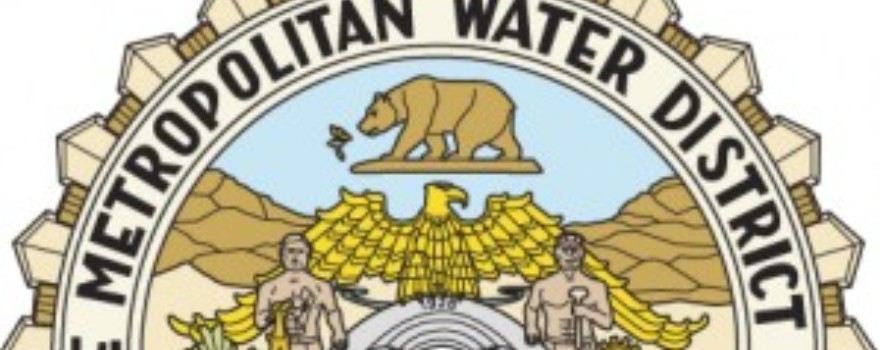From the Metropolitan Water District:
The governing board of Southern California’s primary water agency today supported Gov. Jerry Brown’s edict for mandatory conservation by voting to restrict wholesale deliveries to its 26 member public agencies to help save water and stretch available supplies in the fourth year of statewide drought.
Metropolitan Water District’s cutback amounts to a 15 percent reduction in supplies starting July 1 and includes stiff surcharges for member agencies that go over their allocation. Exact numbers for different agencies will vary based on local supply conditions and past water-saving actions. The action by Metropolitan’s Board of Directors comes less than two weeks after Gov. Brown ordered statewide urban water use reductions.
“Southern California has led the way in water conservation for more than 20 years, and now we’re asking people to do significantly more,” said Metropolitan board Chairman Randy Record. “We know it will be difficult, but we’re in an unprecedented drought.”
This is the fourth time the district has restricted imported supplies in response to drought conditions, the last being a 10 percent cutback from July 2009 to April 2011.
“Through this action, we’re looking to build on Southern California’s proven track-record of water conservation,” Record said. “Since 1990, per capita water use in the region has declined by about 25 percent. Today, we use less imported water than we did 25 years ago, even though the region has added 5 million more people.”
Metropolitan General Manager Jeffrey Kightlinger said limiting supplies is among the tools the district will use to support the governor’s water-saving order. Other actions include the $100 million budgeted by Metropolitan since the governor-declared drought began for rebates and other water- saving incentives to help Southern Californians conserve water inside and outside their homes, and expanded outreach activities to achieve greater consumer awareness and knowledge about ways to save water.
The district also will promote local water supply development and work with the state on new rebate, outreach and funding initiatives to support drought response activities, he said. “Working together, water providers, consumers and businesses can weather this drought by making water conservation part of our daily lives,” Kightlinger said. He added that Metropolitan will continue evaluating conditions and conservation actions in coming months, and consider additional
steps if necessary to ensure available water supplies for the region.California faces unmatched drought conditions in 2015 after recording the hottest year on record in 2014 and the driest year ever recorded in 2013. This year has already seen some of the warmest and driest months on record, including a record low snowpack in the Sierra Nevada. Today, 27 million Californians are living in areas experiencing exceptional drought, according to the U.S. Drought Monitor.
For the Southland, Metropolitan’s deliveries from Northern California through the State Water Project are currently at just 20 percent of its contracted amount. The SWP typically provides about a third of Southern California’s water. Storage in the district’s other supply source—the Colorado River—stands at less than 50 percent of capacity after 15 drought years in the Southwest.
Today’s action limits imported water supplies to Metropolitan’s member agencies and their retailers partly based on their dependency on the district’s imported supplies, while taking into account other local supply sources and conservation actions.
Agencies that exceed their allocated supply will face surcharges of $1,480 to $2,960 per acre-foot of additional water—up to about four times the normal Metropolitan rate. (An acre foot of water is nearly 326,000 gallons, about the amount used by two typical Southland households in the year.) Rather than increase rates across the board, a surcharge is designed to target excessive water use. Any revenues collected from a surcharge would fund Metropolitan’s turf removal program or other similar programs designed to conserve water and reduce future demands.
As part of the board’s action, a resolution endorses the governor’s call for a 25 percent reduction in urban water use and pledges to work with the State Water Resources Control Board to implement that policy.
The Metropolitan Water District of Southern California is a cooperative of 26 cities and water agencies serving nearly 19 million people in six counties. The district imports water from the Colorado River and Northern California to supplement local supplies, and helps its members to develop increased water conservation, recycling, storage and other resource-management programs.
——————————————–
Get the Notebook blog by email and you’ll always be one of the first to know!
- Sign up for daily emails and get all the Notebook’s aggregated and original water news content delivered to your email box by 9AM. Breaking news alerts like this one, too. Sign me up!
 Maven’s Notebook
Maven’s Notebook
constantly watching over the world of California water


